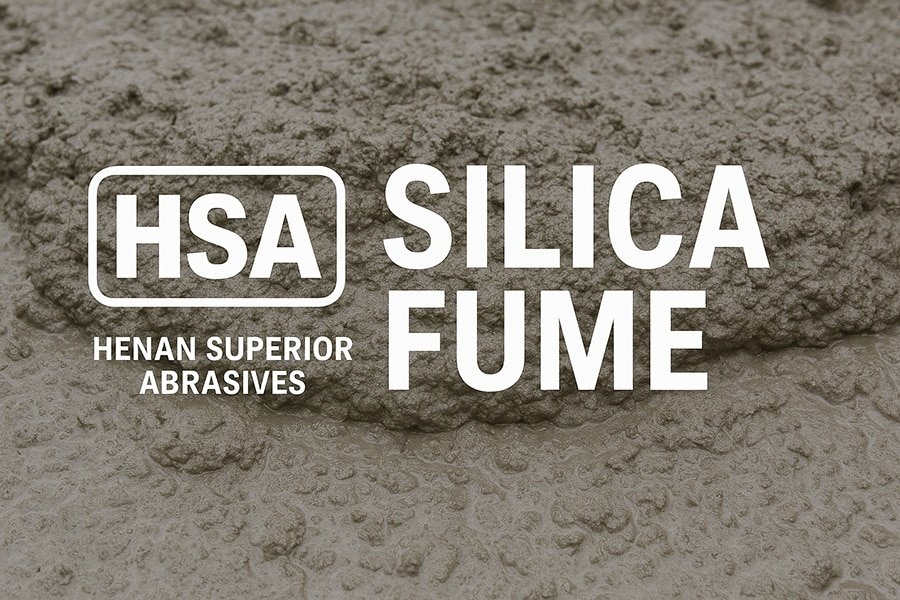Obtained as a by-product of the manufacture of ferrosilicon and silicon metal alloys, silica fume provides important benefits for the marine, building construction, as well as oil and gas industries around the world.
The grey powder of silica fume, also referred to as “volatilized silica” or “microsilica,” presents valuable pozzolanic material that can be categorized into multiple grades and concentrations. Of course, proper classification requires thorough and careful testing of chemical and physical properties alike. In this article, we are going to take a look at silica fume testing standards all around the globe.
Measuring Bulk Density, Surface Area, and Grain Size of Silica Fume
Among the most common applications of silica fume is its addition to cement in order to improve its durability and strength. In fact, silica fume works to reduce the cement permeability and refine its pore structure, which can help to increase its mechanical properties to a great extent.
In order to be able to achieve the maximum benefits, silica fume manufacturers need to be able to measure and understand various physical properties of the silica fume particles themselves, including their bulk density, surface area, and grain size.
Bulk Density
What is Bulk Density?
Bulk density, also referred to as “volumetric density” or “apparent density,” is a property of granules and powders that describes the mass of the divided solid that occupies a unit of volume, including the volume of the voids in between the solid particles.
Bulk density is not intrinsic to a specific material. Instead, it can change based on the way the material is handled. For example, when a powder is placed inside a cylinder, it will have a specific bulk density. Once the cylinder starts rotating, the powder particles will move and end up being closer together, leading to higher bulk density.
How is Bulk Density Measured?
The bulk density of granules, powders, and other divided solids is commonly measured with a bulk density apparatus. Remember that this bulk density tester does not measure an intrinsic property of a material; as such, the bulk density of powders is generally reported both as freely settled and tapped density.
Bulk Density of Silica Fume – When it comes to silica fume, the standard bulk density will depend on the type of material in question:
- As-produced silica fume. As-produced type of silica fume collected from ferrosilicon alloy or silicon metal production generally has a bulk density ranging between 8 and 27 lb/ft3 (or 130 and 430 kg/m3). Most of the time, you can expect to observe the values near the middle of this range.
- Slurried silica fume. The bulk density of slurried silica fume is generally around 83 to 90 lb/ft3 (or 1320 to 1440 kg/m3). Most slurries have nominal silica fume content of around 50% by mass.
- Densified (compacted) silica fume. The bulk density of compacted silica fume ranges between 30 and 40 lb/ft3 (or 480 and 640 kg/m3). When the bulk density reaches beyond 45 lb/ft3 (720 kg/m3), dispersing silica fume particles within concrete can become increasingly difficult.
The Elkem 920 undensified micro silica fume usually has 200 and 350 kg/m3 bulk density, the densified micro silica fume is 500 to 700 kg/m3.
- Loss On Ignition 3.41%
- pH 7.66
- Specific Gravity 2.2
- Bulk Density (lbs/ft3) 18.11
Surface Area
What is Surface Area?
Surface area is a physical property describing the total area of any given surface. When talking about powders like silica fume, the surface area presents the total area of all of the particles contained in one gram of the material.
How is Surface Area Measured?
The most common test used to measure the surface area of silica fume is the nitrogen adsorption method. Other methods, such as the Blaine apparatus, may not be appropriate for measuring the surface area of this particular material for a variety of reasons. In the case of the Blaine apparatus, the issue lies in the difficulties associated with obtaining the 0.50 porosity level required to conduct the test.
It is important to note that the nitrogen adsorption measurement result is considerably affected by the carbon content of the silica fume. As such, when reporting results, the carbon content should be reported along with the surface area. Many times, the Loss on Ignition (LOI) is reported instead of the carbon content.
Surface Area of Silica Fume
Silica fume consists mostly of fine spherical particles with a smooth, glassy surface. The surface area of each particle is estimated to be approximately 20,000 m2/kg, when measured by the nitrogen adsorption method.
To better illustrate the extreme fineness of micro silica, let us compare it to other fine materials:
- Silica fume: 13,000 to 30,000 m2/kg, nitrogen adsorption
- Ground granulated blast-furnace slag: 350 to 600 m2/kg, Blaine
- Fly ash: 400 to 700 m2/kg, Blaine
- Portland cement: 300 to 400 m2/kg, Blaine
Keep in mind that the values produced with different measuring techniques shouldn’t be compared directly.
Grain Size
What is Grain Size?
Grain or particle size presents the diameter of individual grains or particles within a granular material. When talking about silica fume, grain size refers to the diameter measurement of each silica fume particle.
How is Grain Size Measured?
One of the most common tests used to measure the grain size of silica fume is the residue (oversize) on the 45 um (No. 325) sieve. During the test, a sample of silica fume material is washed through a 45 um sieve, and the composition and size of the oversize particles are reported. These oversize particles typically contain quartz, wood, coal, rust, carbon, and relatively large silica fume agglomerates. During the test, the amount of oversize material will be considerably influenced by the silica-fume collection system, with the amount of oversize material varying from one system to another.
Because many non-silica components of silica fume tend to have larger particles, some silica fume suppliers choose to remove these oversize particles from their silica fume materials. Some of these beneficiating or oversize removal processes use various types of classifiers or cyclones to work with the dry fume, while others involve running slurried silica fume through screens after the silica fume has been passed through a dry beneficiating process.
Grain Size of Silica Fume
While the particle-size distribution of silica fume may vary depending on the furnace gas exhaust temperature and the fume type, most silica fume particles are smaller than 1um, with an average diameter of approximately 0.1 um. For comparison, this presents approximately 1/100 of the average size of a cement particle.
Silica Fume Standards in Different Countries
A number of countries, including China, Canada, Brazil, Japan, and more, have developed their own standards for the local use of silica fume powder. These standards outline the mandatory physical and chemical requirements for silica fume to be used as an addition to concrete or grouts, mortars, and other mixtures.
The various standards for different countries across the globe are summarized below:
- China: YB/T115-2004, GB/T21236-2007
- Europe: EN 13263
- United States: ASTM C1240
- Canada: CAN/CSA A23.5
- Europe: EN 13263
- Norway: NS3045
- Brazil: NBR 13956-1997
- Japan: JIS A 6207:2000
China’s Chemical Content Testing Standards for Silica Fume
Within China, there are also different standards for testing silica fume’s chemical content:
- SiO2 content: GB/T 6901.2 or GB/T 6901.3
- Fe2O3 content: GB/T 14506.11
- Al2O3 content: GB/T 6901.5 or GB/T 6901.6
- CaO content: GB/T 6901.8
- Na2O content: GB/T 14506.11-1993
- MgO content: GB/T 6901.8
- K2O content: GB/T 14506.11-1993
- Cl (Chloride) content: JC/T 420
- C (Carbon Free) content: GB/T 16555.1-1996, GB/T 16555.2-1996
- H2O (Moisture Content): GB/T 3007
- LOI (Loss on Ignition): GB/T 901.1
- Remains on 45 um sieve: YB/T 5164
- PH velue: GB/T 9274
- Specific Surface Area: GB/T 19587 – 2017
ASTM Chemical Content Testing Standards for Silica Fume
- Standard Specification for Silica Fume Used in Cementitious Mixtures: ASTM C1240 – 20
- Remains on 45 um sieve: ASTM C430
- Specific Surface Area: ASTM C1069 – Nitrogen Adsorption
- Compressive Strength: ASTM C109/C109M
- …
Choose High-Quality Silica Fume Products Available from Henan Superior Abrasives Import & Export Co., Ltd.
Without a doubt, silica fume presents a valuable material for a broad range of industries and applications. As such, it is of utmost importance to find high-quality silica fume materials with the desired physical and chemical properties. The good news is that at Henan Superior Abrasives Import & Export Co., Ltd., we carry silica fume of various concentrations and grades to meet all of your demands. Find your ideal micro silica product now.
Download PDF: A Complete Guide to Silica Fume Testing





